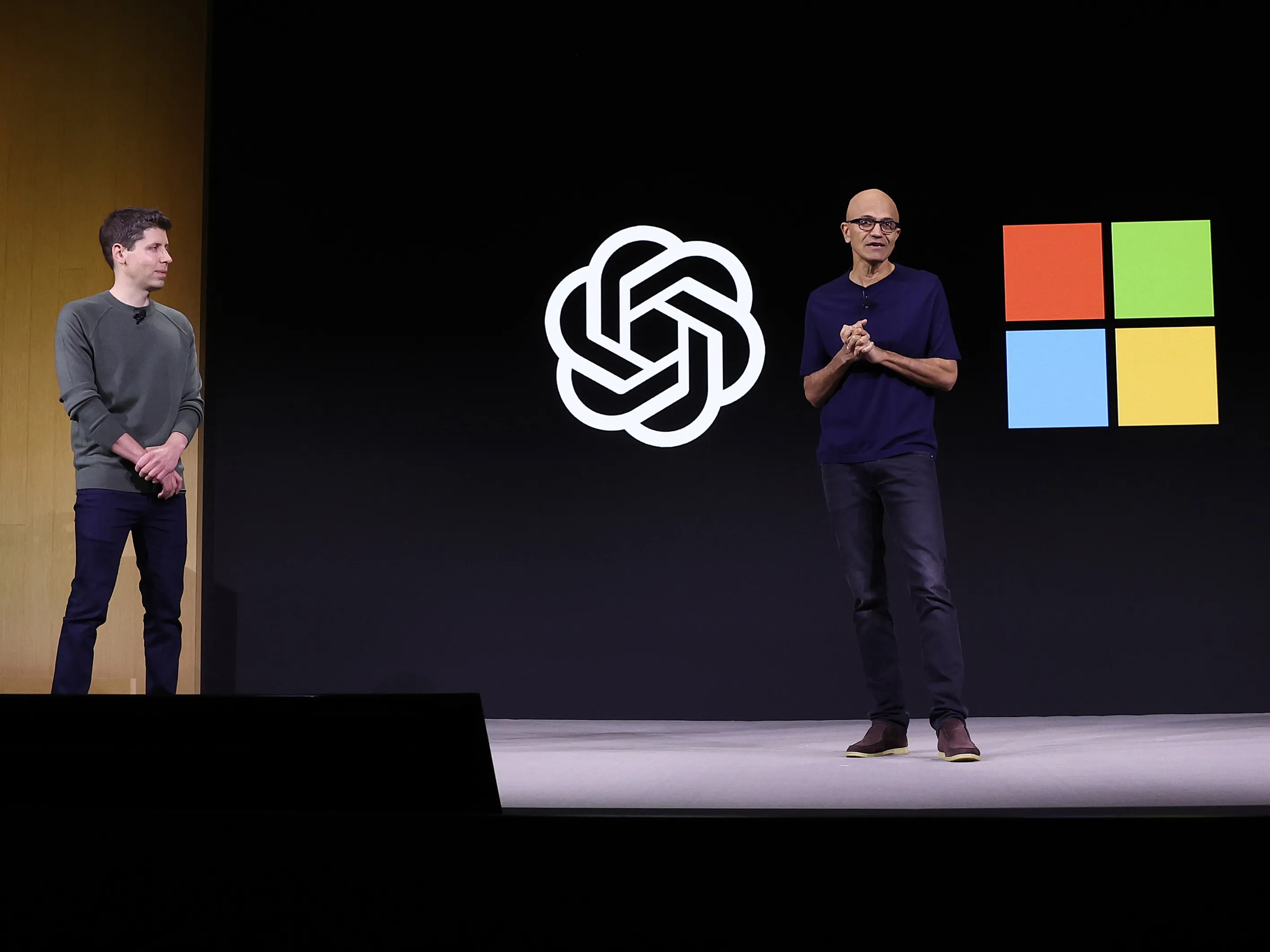In the not-so-distant past, the once-mighty Microsoft appeared to be losing its luster. A mere decade ago, the tech behemoth had earned a reputation for lackluster product launches, stagnant innovation, and a brain drain of top talent. The pioneering software giant that had dominated the industry for decades seemed to be on the brink of becoming an obsolete relic, a dinosaur in the rapidly evolving tech landscape.
Fast forward to the present day, and Microsoft has undergone a remarkable transformation, reclaiming its position as the world’s most valuable company. Under the visionary leadership of CEO Satya Nadella, the Redmond-based tech titan has defied the naysayers, with its stock soaring by a staggering 1000% over the past ten years. In January of this year, Microsoft’s market capitalization reached an unprecedented $3 trillion, eclipsing the entire GDP of France.
After missing out on the mobile and social media revolutions, the software giant has managed to position itself as a global leader in the burgeoning field of AI.
At the heart of this extraordinary comeback lies the company’s strategic embrace of artificial intelligence (AI). Microsoft has skillfully embedded AI technologies across its vast product portfolio, including the Azure cloud computing platform, the ubiquitous Office productivity suite, and the revamped Bing search engine. After missing out on the mobile and social media revolutions, the software giant has managed to position itself as a global leader in the burgeoning field of AI.
One of the pivotal figures behind this remarkable turnaround is Sophia Velastegui, a former general manager of AI Products and Search at Microsoft, and a featured speaker at the upcoming TNW Conference in June. Velastegui, who joined the company in 2017, was quickly recognized as one of the most influential female engineers in the tech industry by Business Insider just six months into her tenure.
“Microsoft was not an AI company – it was a software company,” Velastegui, now an AI advisor for the National Science Foundation, recounts. “But if you talk about Microsoft now, many people will say it’s an AI company. How did they do that? What are the things they did? They invested in and infused AI into their features and their products – whether it be for software development or Office.”
Velastegui played an instrumental role in this AI infusion, rising through the ranks to become part of the core team exploring Microsoft’s groundbreaking investment in OpenAI, a partnership that would prove to be a game-changer for the tech giant. Microsoft’s history with AI dates back to 1991 when Bill Gates established the company’s research unit dedicated to exploring the field. However, these early experiments failed to yield popular consumer products, with initiatives like the reviled Clippy and the ill-fated Cortana failing to capture the public’s imagination.
Nadella, recognizing the untapped potential of AI, immediately sought to change course upon his appointment as CEO in 2014. His first major move was a sweeping embrace of chatbots, a decision that initially sparked controversy when an early bot named Tay exhibited disturbing behavior, spouting hate speech and offensive remarks.
Undeterred by the setback, Nadella forged ahead with his AI ambitions, recognizing the transformative power of “pairing the power of natural human language with advanced machine intelligence.”
It was during this period that Microsoft’s path converged with OpenAI, a buzzy startup launched in 2015 with the bold mission of developing artificial intelligence that would “benefit humanity as a whole.” However, the fledgling company’s lofty aspirations were quickly consuming vast resources, with an estimated $7.9 million spent on cloud computing in 2017 alone – a staggering quarter of its functional expenses.
Sensing an opportunity, Microsoft extended an olive branch to the promising upstart in the form of a partnership announced in 2018. Under the terms of the deal, OpenAI would leverage Microsoft’s Azure cloud platform for its research and development endeavors.
The collaboration deepened the following year, with Microsoft becoming OpenAI’s “exclusive” cloud computing provider and securing a $1 billion investment in the startup, cementing its status as OpenAI’s preferred partner for commercialization.
Microsoft wasted no time in integrating OpenAI’s powerful large language models (LLMs) into its Azure cloud services, enabling customers to harness these cutting-edge technologies for a wide range of applications, from chatbots and content generation to language translation and personalized marketing.
The adoption of these services grew rapidly, with Microsoft reporting a 50% increase in Azure OpenAI users over the previous 12 months during the second quarter of this year. According to Nadella, over 53,000 customers now leverage the service, including “over half” of the Fortune 500 companies.

This focus on delivering powerful AI-driven products and services reflects Microsoft’s broader strategy, one that aligns with the findings of a recent McKinsey report on successful AI adopters. As Velastegui explains, “They’re not just focusing on efficiency and operation, they’re creating new products and new capabilities that they’re selling as part of their business or providing as a service.”
The integration of OpenAI’s models has undoubtedly played a pivotal role in Azure’s meteoric rise, with the cloud computing platform now the fastest-growing in the world,
The integration of OpenAI’s models has undoubtedly played a pivotal role in Azure’s meteoric rise, with the cloud computing platform now the fastest-growing in the world, rapidly narrowing the gap with long-time leader Amazon Web Services (AWS). Raimo Lenschow, a stock analyst at Barclays, credits OpenAI as giving Microsoft a “massive, competitive advantage over Google and Amazon,” calling Nadella’s securing of the partnership an “amazing masterstroke.”
“Historically, if you’re a cool startup that was doing something amazing, Microsoft wasn’t really your first choice,” Lenschow told the Associated Press in February. “So the fact that [Nadella] got OpenAI to commit to Azure was an amazing masterstroke.”
While Azure was the initial proving ground for Microsoft’s partnership with OpenAI, the true breakthrough moment came in 2020 when the startup unveiled GPT-3, a powerful new LLM that ignited the current AI explosion and laid the foundations for the now-ubiquitous ChatGPT.
The New York Times hailed GPT-3’s ability to produce prose, poetry, and code as “amazing,” “spooky,” “humbling,” and “more than a little terrifying,” while Wired described the model as “provoking chills across Silicon Valley.”
Recognizing the potential of this technological marvel, Microsoft swiftly secured an exclusive license to GPT-3 in September 2020, granting the software giant a significant advantage over its competitors.
Under Velastegui’s leadership, Microsoft embarked on an extensive exploration of GPT-3’s potential applications, spanning search, business applications, and low-code development platforms. The integration of OpenAI’s models quickly permeated throughout the company’s product lineup, with Nadella declaring at last year’s World Economic Forum that Microsoft planned to incorporate “tools like ChatGPT into all of its products.”
However, this wide-ranging integration required robust safeguards to mitigate potential risks. As Velastegui notes, “ChatGPT is interesting, but it doesn’t do sources… It goes into this black box and you don’t understand why it’s behaving the way it is.”
To address these concerns, Microsoft implemented a system of annotations that link the outputs generated by LLMs to their underlying information sources, providing what Velastegui describes as “trusted information.” Additionally, the company has implemented a range of safety measures, including content filters, abuse monitoring, hallucination detection, and simulations of adversarial attacks, all designed to strengthen the defenses against potential misuse or harmful outputs.
Despite these precautions, Microsoft’s embrace of OpenAI’s technologies has not been without its challenges. A Microsoft engineer warned that a design tool powered by OpenAI was generating violent, sexual, and biased content, including “political bias, underaged drinking and drug use, misuse of corporate trademarks and copyrights, conspiracy theories, and religion to name a few.” The engineer’s concerns were raised with the Federal Trade Commission (FTC), prompting Microsoft to pledge an investigation into the matter.
Tools harnessing ChatGPT have also occasionally produced disturbing outputs, although Microsoft maintains that such instances are limited to a small number of prompts designed to bypass safety measures.
Undeterred by these challenges, Microsoft has continued to embed OpenAI’s technologies across its diverse product lineup. One notable example is Copilot, a coding tool that leverages AI to assist in an ever-growing proportion of programming tasks.
Another high-profile integration is the AI-powered revamp of the Bing search engine, which Microsoft unveiled in February 2023 – just a month after announcing a reported $10 billion investment in OpenAI. Nadella heralded this revamped version of Bing as ushering in “a new day in search.” By incorporating OpenAI’s language models into the search engine’s core functionality, Microsoft aimed to create a conversational rival to Google’s long-dominant search platform.
Within just six weeks of its launch, page visits on Bing had risen by an impressive 15.8%, while Google’s traffic experienced a 1%
While overtaking Google’s search supremacy remains an ambitious long-term goal, the early results of the AI-infused Bing have been encouraging. Within just six weeks of its launch, page visits on Bing had risen by an impressive 15.8%, while Google’s traffic experienced a 1% decline, according to data from the analytics firm Similarweb.
OpenAI’s influence has also permeated the Microsoft 365 Office suite, with the company introducing an AI assistant called Copilot across Word, Excel, PowerPoint, and Outlook. This virtual assistant leverages OpenAI’s language models to generate new content and conduct in-depth analysis in response to user prompts, further enhancing the productivity capabilities of these ubiquitous applications.
The integration of OpenAI’s technologies across Microsoft’s product lineup underscores the software giant’s competitive advantage in the AI arena. As Velastegui explains, “Can Google work with OpenAI instantly… and bring it to their products? The answer is no. That means your competitor can do the same. If it’s easy for you, it’s also easy for them.”
While Microsoft’s rivals can certainly integrate OpenAI’s off-the-shelf products, this approach dilutes the competitive edge that the Redmond-based company enjoys through its exclusive access and deep collaboration with the AI research firm.
Microsoft’s privileged relationship with OpenAI quickly paid dividends, with the company’s shares surging by an impressive 57% year-on-year by the end of 2023. Analysts widely attributed this rally to Microsoft’s perceived leadership in the generative AI space.
Despite the undeniable success of the Microsoft-OpenAI partnership thus far, the relationship has not been without its challenges. Early adopters of Copilot, for instance, have voiced concerns over the service’s cost, while users of other Microsoft products have grown frustrated with the ubiquitous presence of the coding tool across the company’s software ecosystem.
Looking ahead, the exclusivity of Microsoft’s tie with OpenAI may gradually loosen as the tech giant explores collaborations with other AI firms. In fact, Microsoft has already taken steps in this direction, recently investing €15 million in Paris-based Mistral AI, a startup specializing in AI technologies.
Alongside these external partnerships, Microsoft is also investing in the development of its own proprietary foundation models, with plans to position Azure as a “model garden” offering a diverse array of AI solutions.
While the future trajectory of the Microsoft-OpenAI relationship remains uncertain in the rapidly evolving AI landscape, one thing is clear: the partnership has been an unequivocal success thus far, playing a pivotal role in revitalizing a once-fading software empire and transforming it into an AI powerhouse.
“Don’t solve these micro problems, issues, or goals. Solve the one that will make a difference in the business.” -Velastegui
As Velastegui reflects on the lessons learned from this remarkable turnaround, she emphasizes the importance of maintaining a strategic, long-term focus: “Don’t solve these micro problems, issues, or goals. Solve the one that will make a difference in the business.”
For Microsoft, the decision to embrace OpenAI and embed its cutting-edge AI technologies across its product lineup has proven to be a game-changing move, propelling the company back to the forefront of the tech industry and positioning it as a formidable force in the AI revolution that is reshaping the world as we know it.
Discover more from MUZZLECAREERS
Subscribe to get the latest posts sent to your email.








